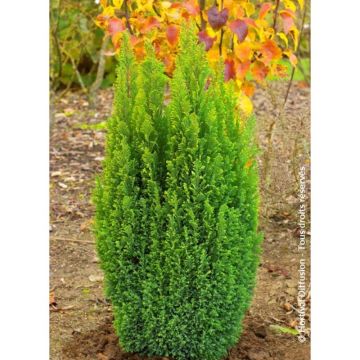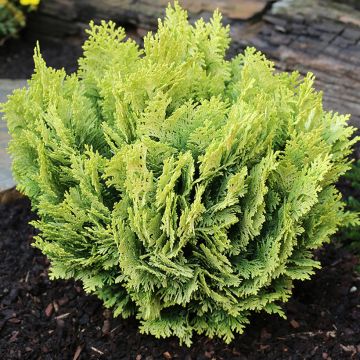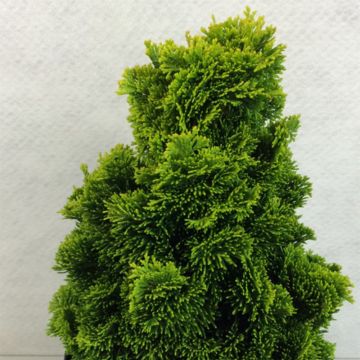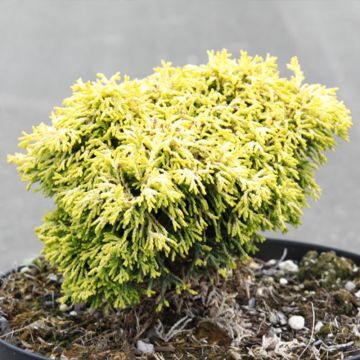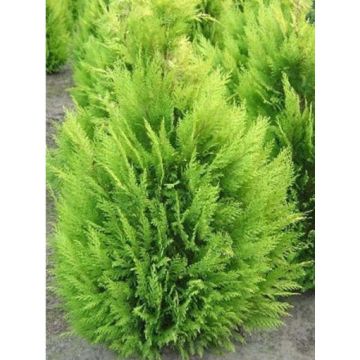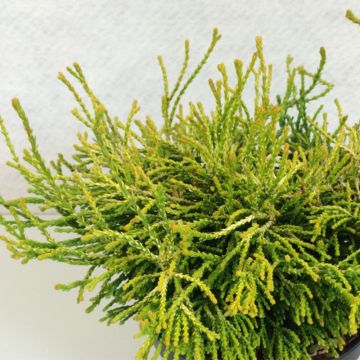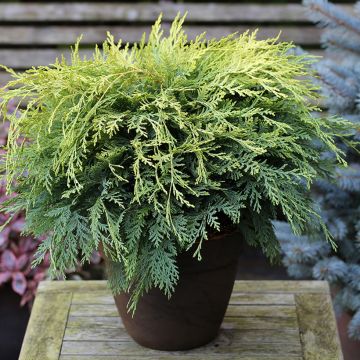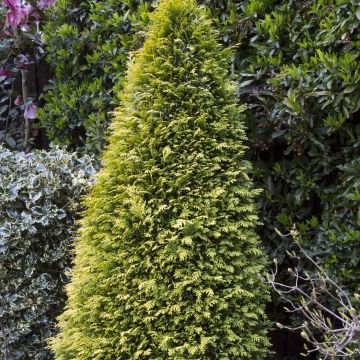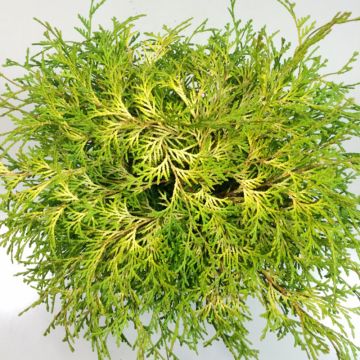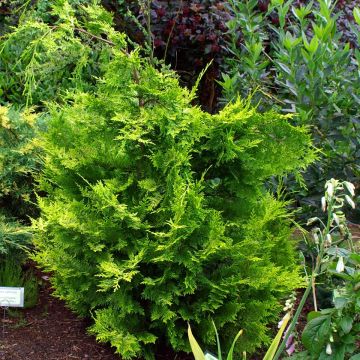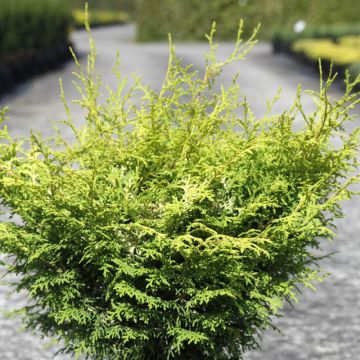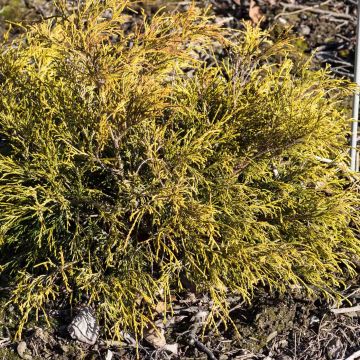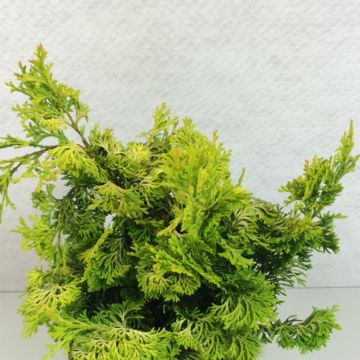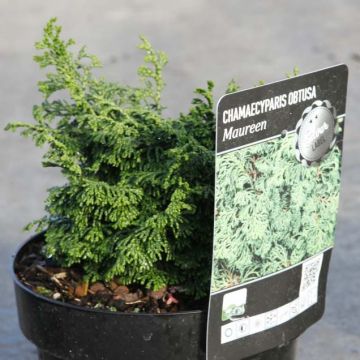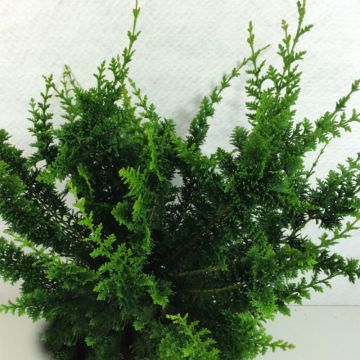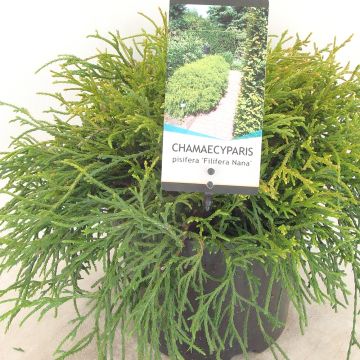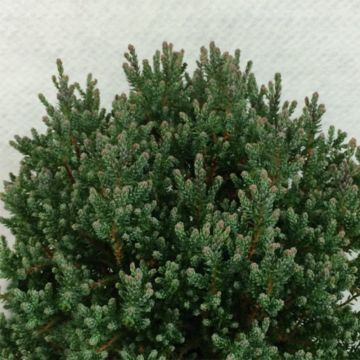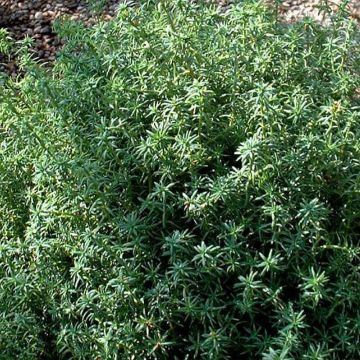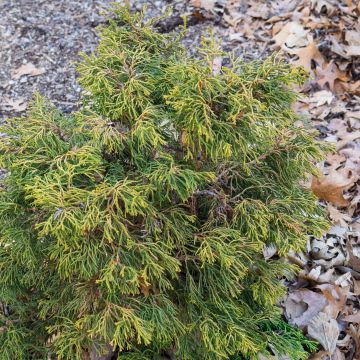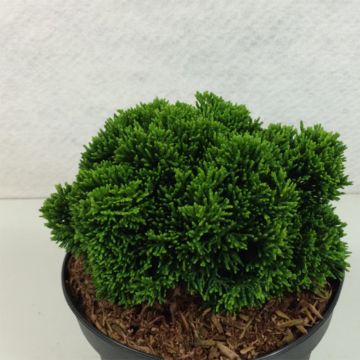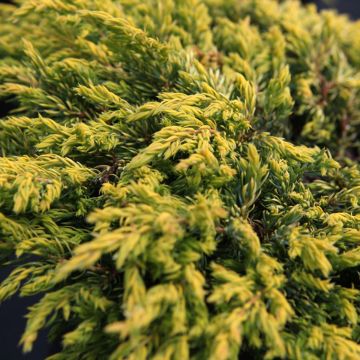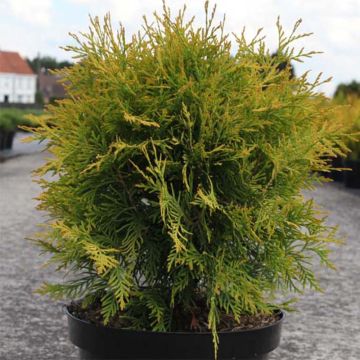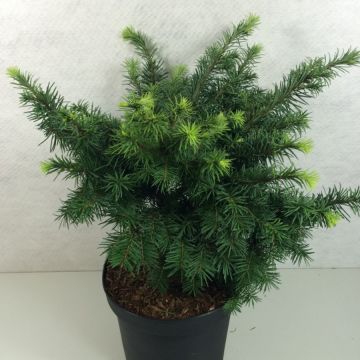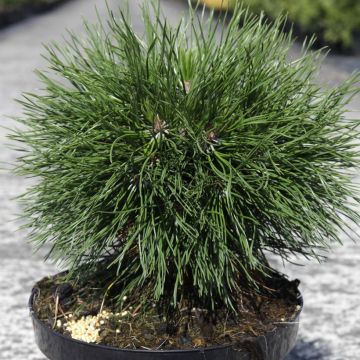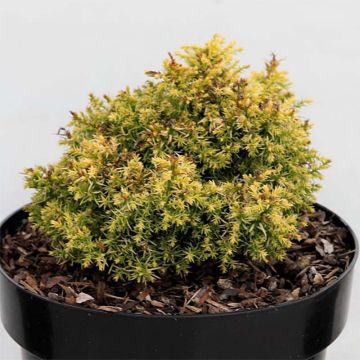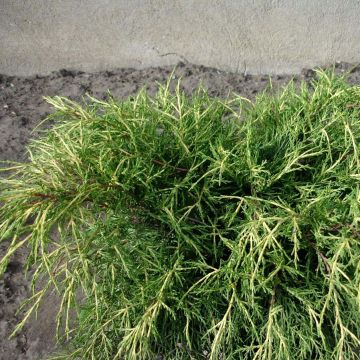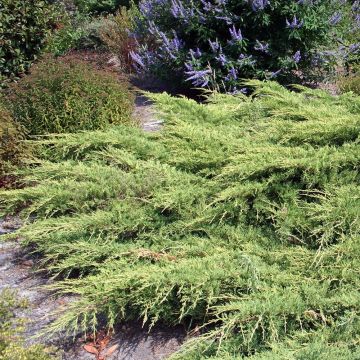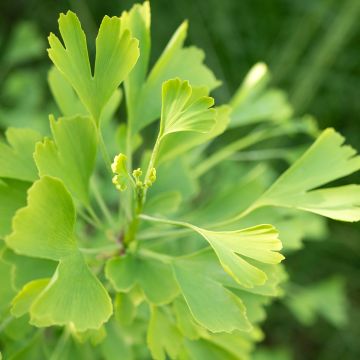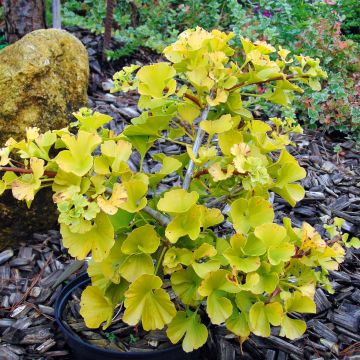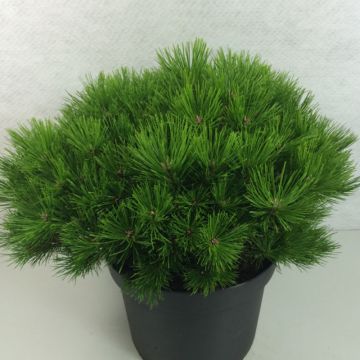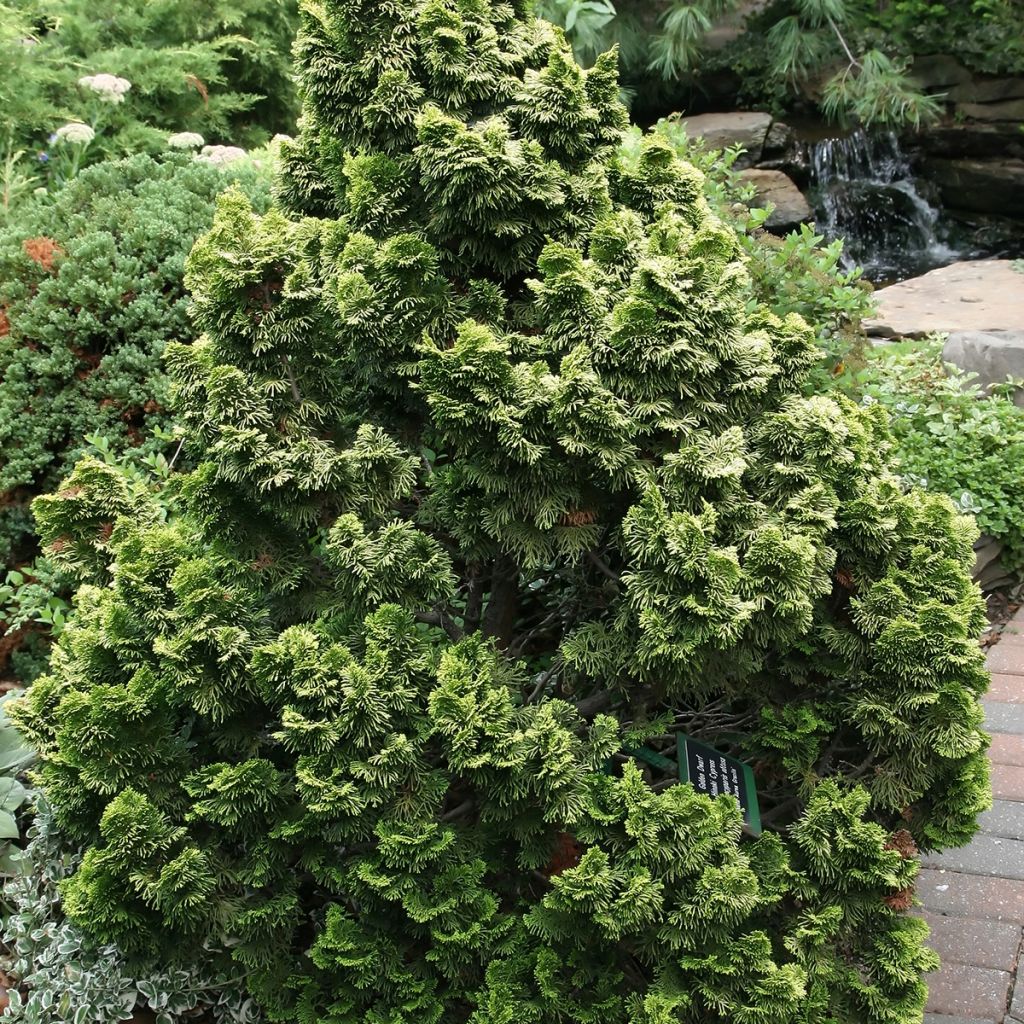

Chamaecyparis obtusa Nana Aurea - Hinoki Cypress
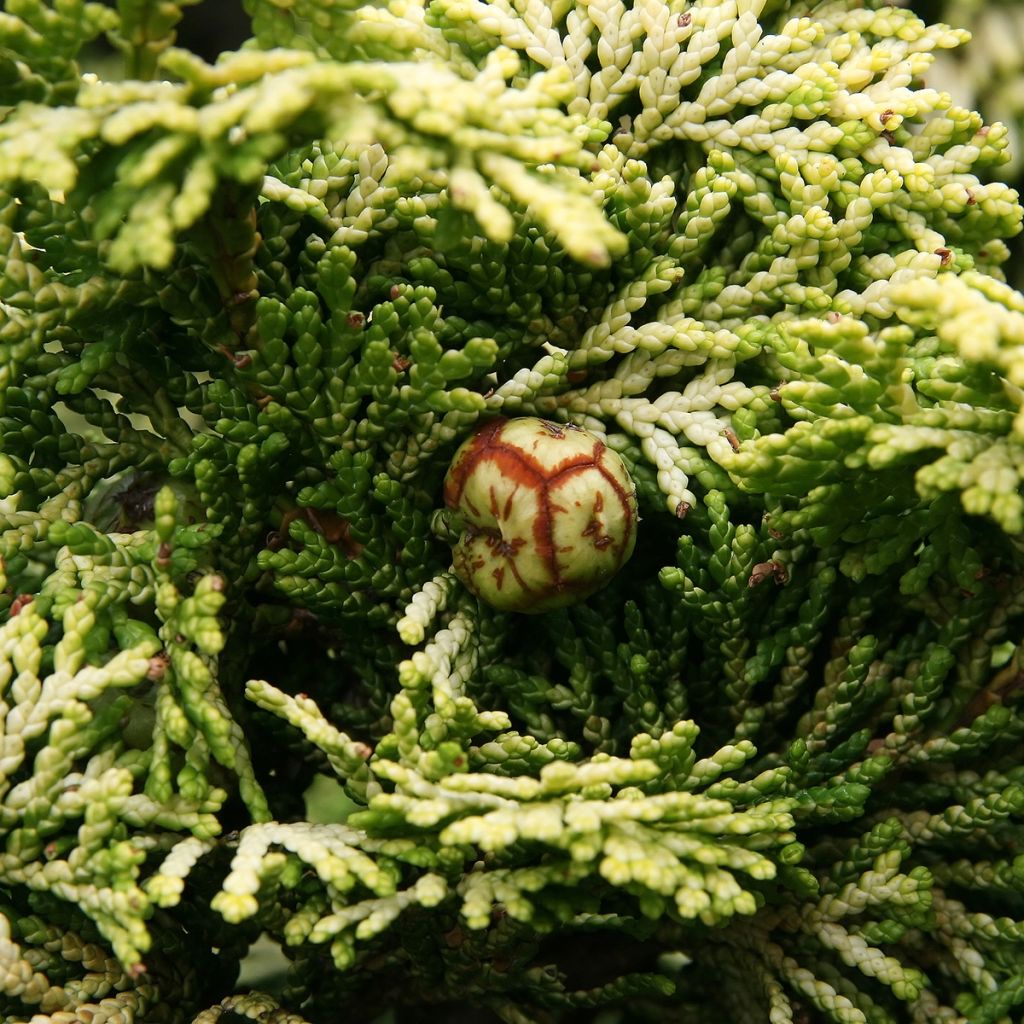

Chamaecyparis obtusa Nana Aurea - Hinoki Cypress
Chamaecyparis obtusa Nana Aurea - Hinoki Cypress
Chamaecyparis obtusa Nana Aurea
Hinoki Cypress, Japanese Cypress, Hinoki False Cypress
Why not try an alternative variety in stock?
View all →This plant carries a 24 months recovery warranty
More information
We guarantee the quality of our plants for a full growing cycle, and will replace at our expense any plant that fails to recover under normal climatic and planting conditions.
From €5.90 for pickup delivery and €6.90 for home delivery
Express home delivery from €8.90.
From €5.90 for pickup delivery and €6.90 for home delivery
Express home delivery from €8.90.
Does this plant fit my garden?
Set up your Plantfit profile →
Description
The Chamaecyparis obtusa 'Nana Aurea' is a conifer from the Cupressaceae family, native to Japan and Taiwan. This variety of Japanese Hinoki Cypress has beautiful golden foliage, structured in characteristic small fan shapes. Very aesthetic, this pattern is accompanied by a globe-shaped habit that becomes conical with age. Slow-growing, it generally reaches a height of about 1.50 m (4 ft 11 in) with an equivalent width. It adapts to slightly acidic to neutral, moist and well-drained soils, and a sunny exposure ensures that the colours are vibrant.
The foliage of the 'Nana Aurea' Hinoki Cypress is evergreen and maintains its golden colour throughout the year, giving this variety its full interest. Its decorative aspect is further enhanced by its particularly graceful foliage. The shoots are shaped like small shells, fringed at the ends and irregularly arranged on the plant. This very unique architecture makes it easy to identify this conifer.
From slow to very slow growth, it changes over time from a globular shape to a more pyramidal cone shape, measuring about 1.20 to 1.50 m (3 ft 11 in to 4 ft 11 in). In old gardens, magnificent specimens of 2 m (6 ft 7 in) or even 2.50 m (8 ft 2 in) in height, of venerable age (several decades), can be found.
These characteristics make it particularly suitable for rock gardens, where its distinctive habit will be highlighted by rocks, forming a striking scene, like a Zen garden. The growing conditions of a rock garden - especially regarding drainage - will suit it well, provided that the soil is not drying out.
It also looks fabulous in a contemporary garden, where it will pair with other architectural plants perfectly. The Nandina domestica 'Fire Power', named "sacred bamboo" due to its delicate and tousled foliage, changing colours from red to green, would be the ideal companion.
The semi-shaded background of Mahonia media 'Winter Sun' will provide a dark green backdrop, contrasting well with the golden hue of Chamaecyparis obtusa 'Nana Aurea', and its large compound leaves will stand out against the compact shoots of our small conifer. It can also be used as a border plant and enhanced by perennial ground covers.
The Japanese cypress is well beloved in Japan, where it is used to construct numerous buildings such as temples. The Japanese name for Chamaecyparis obtusa is Hinoki, which means "fire tree," because it was once used to generate fire by rubbing the wood. In addition to its economic importance for construction, an essential oil with soothing effects is extracted from it.
Report an error about the product description
Chamaecyparis obtusa Nana Aurea - Hinoki Cypress in pictures
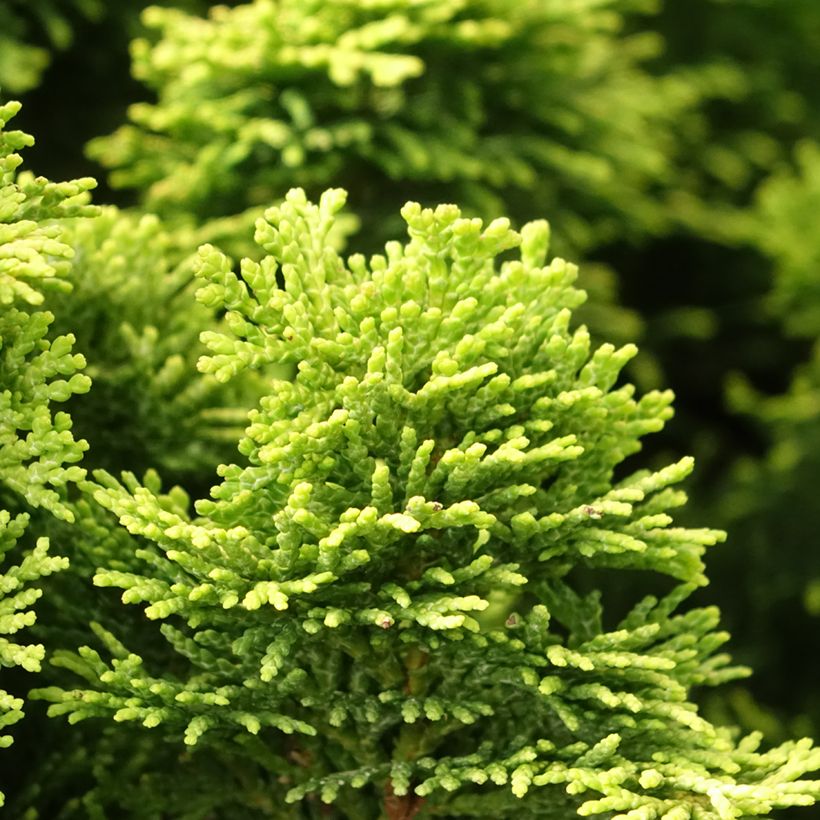





Plant habit
Foliage
Botanical data
Chamaecyparis
obtusa
Nana Aurea
Cupressaceae
Hinoki Cypress, Japanese Cypress, Hinoki False Cypress
Cultivar or hybrid
Other Chamaecyparis
Planting and care
Chamaecyparis obtusa 'Nana Aurea' grows best in sunny locations. It can still grow in partial shade, but it will turn its foliage green instead of yellow. It needs slightly acidic and well-drained soil but retains some moisture, especially during summer. This plant grows slowly, so it's essential to water it if there's a drought to keep its foliage healthy. You can plant it in slightly chalky soil, but dig at least a 60 x 60 cm hole and mix in slightly acidic compost (pH 6 to 6.5) with the soil.
It's best to plant in autumn to take advantage of winter rains or at the end of winter, avoiding freezing periods. A good, neutral garden soil can be used. If the soil is too sandy, adding compost mixed with the soil will help. When planting, you should water it well and monitor its watering during the first two years and summers. This plant grows slowly, so it's suitable for container gardening on a balcony or terrace but needs regular watering.
Planting period
Intended location
Care
This item has not been reviewed yet - be the first to leave a review about it.
Conifers
Haven't found what you were looking for?
Hardiness is the lowest winter temperature a plant can endure without suffering serious damage or even dying. However, hardiness is affected by location (a sheltered area, such as a patio), protection (winter cover) and soil type (hardiness is improved by well-drained soil).

Photo Sharing Terms & Conditions
In order to encourage gardeners to interact and share their experiences, Promesse de fleurs offers various media enabling content to be uploaded onto its Site - in particular via the ‘Photo sharing’ module.
The User agrees to refrain from:
- Posting any content that is illegal, prejudicial, insulting, racist, inciteful to hatred, revisionist, contrary to public decency, that infringes on privacy or on the privacy rights of third parties, in particular the publicity rights of persons and goods, intellectual property rights, or the right to privacy.
- Submitting content on behalf of a third party;
- Impersonate the identity of a third party and/or publish any personal information about a third party;
In general, the User undertakes to refrain from any unethical behaviour.
All Content (in particular text, comments, files, images, photos, videos, creative works, etc.), which may be subject to property or intellectual property rights, image or other private rights, shall remain the property of the User, subject to the limited rights granted by the terms of the licence granted by Promesse de fleurs as stated below. Users are at liberty to publish or not to publish such Content on the Site, notably via the ‘Photo Sharing’ facility, and accept that this Content shall be made public and freely accessible, notably on the Internet.
Users further acknowledge, undertake to have ,and guarantee that they hold all necessary rights and permissions to publish such material on the Site, in particular with regard to the legislation in force pertaining to any privacy, property, intellectual property, image, or contractual rights, or rights of any other nature. By publishing such Content on the Site, Users acknowledge accepting full liability as publishers of the Content within the meaning of the law, and grant Promesse de fleurs, free of charge, an inclusive, worldwide licence for the said Content for the entire duration of its publication, including all reproduction, representation, up/downloading, displaying, performing, transmission, and storage rights.
Users also grant permission for their name to be linked to the Content and accept that this link may not always be made available.
By engaging in posting material, Users consent to their Content becoming automatically accessible on the Internet, in particular on other sites and/or blogs and/or web pages of the Promesse de fleurs site, including in particular social pages and the Promesse de fleurs catalogue.
Users may secure the removal of entrusted content free of charge by issuing a simple request via our contact form.
The flowering period indicated on our website applies to countries and regions located in USDA zone 8 (France, the United Kingdom, Ireland, the Netherlands, etc.)
It will vary according to where you live:
- In zones 9 to 10 (Italy, Spain, Greece, etc.), flowering will occur about 2 to 4 weeks earlier.
- In zones 6 to 7 (Germany, Poland, Slovenia, and lower mountainous regions), flowering will be delayed by 2 to 3 weeks.
- In zone 5 (Central Europe, Scandinavia), blooming will be delayed by 3 to 5 weeks.
In temperate climates, pruning of spring-flowering shrubs (forsythia, spireas, etc.) should be done just after flowering.
Pruning of summer-flowering shrubs (Indian Lilac, Perovskia, etc.) can be done in winter or spring.
In cold regions as well as with frost-sensitive plants, avoid pruning too early when severe frosts may still occur.
The planting period indicated on our website applies to countries and regions located in USDA zone 8 (France, United Kingdom, Ireland, Netherlands).
It will vary according to where you live:
- In Mediterranean zones (Marseille, Madrid, Milan, etc.), autumn and winter are the best planting periods.
- In continental zones (Strasbourg, Munich, Vienna, etc.), delay planting by 2 to 3 weeks in spring and bring it forward by 2 to 4 weeks in autumn.
- In mountainous regions (the Alps, Pyrenees, Carpathians, etc.), it is best to plant in late spring (May-June) or late summer (August-September).
The harvesting period indicated on our website applies to countries and regions in USDA zone 8 (France, England, Ireland, the Netherlands).
In colder areas (Scandinavia, Poland, Austria...) fruit and vegetable harvests are likely to be delayed by 3-4 weeks.
In warmer areas (Italy, Spain, Greece, etc.), harvesting will probably take place earlier, depending on weather conditions.
The sowing periods indicated on our website apply to countries and regions within USDA Zone 8 (France, UK, Ireland, Netherlands).
In colder areas (Scandinavia, Poland, Austria...), delay any outdoor sowing by 3-4 weeks, or sow under glass.
In warmer climes (Italy, Spain, Greece, etc.), bring outdoor sowing forward by a few weeks.

































